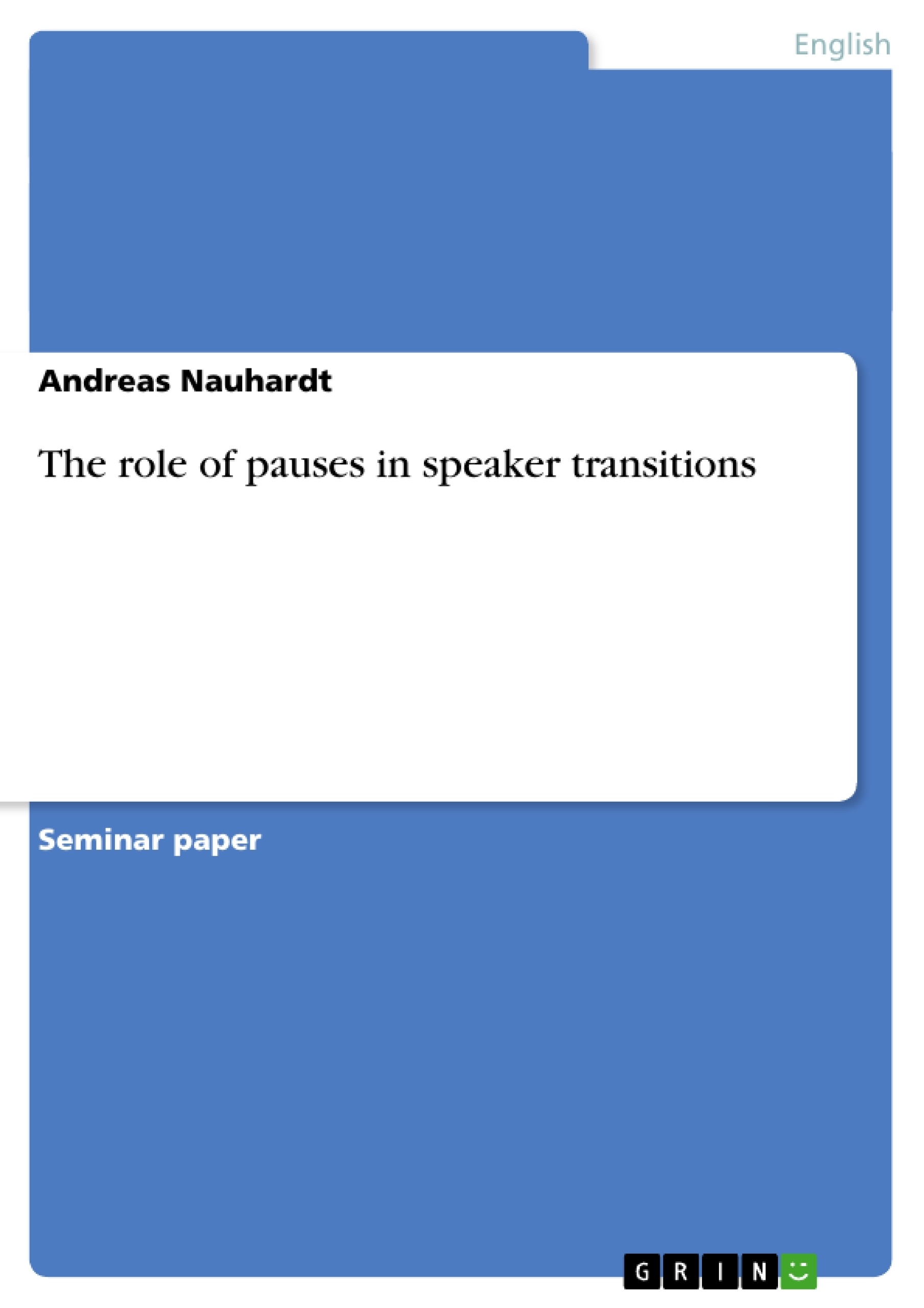Excerpt
Table of contents
1. Introduction
2. Assessments
3. Transcript of assessments and their next turns
4. Analysis of selected assessments and their next turns
5. The role of pauses
6. Summary
7. Transcript of the whole datum
8. References
9. Declaration on oath
1. Introduction
The following paper tries to analyse a passage of the conversation “Yum Chow” from Wally & friends . The presence of prosodic features within this passage which relates to lines 234 to 252 should be contents of this paper.
First of all, a definition about assessments including several examples and among others also from the datum should function as a first overview.
Secondly, there will be the transcript of the assessments and their next turns of the selected passage.
Furthermore, I will give a summary of the role of pauses in speaker transitions. This specific prosodic feature will also be illustrated by examples from the datum.
Afterwards, a brief summary of prosodic features in general should bring this paper to a conclusion.
2. Assessments
Essential to understand the role of pauses in speaker transitions, first of all, are background information and knowledge about assessments.
An assessment is simply an individual evaluation of someone else’s utterance. Assessments are usually followed by agreements. Assessments are routinely used when people take part in social activities, especially in conversations.
It can be said that participation in events and assessing them are related endeavours. The example, which is given below and was taken from the selected passage, illustrates this point:
Example 1: Wally & friends: Yum Chow (DAT: 28.01, 234-252)
1. WA: │ SEVENteen dollars is about twelve │POUNds
2. MA: for the thr│EE of [us
3. BE: [│THAT's not dear
This example shows that an agreement follows an assessment. The assessment can be found in line 1 “for the thr│EE of [us”. It is a reaction to Wally’s latter statement (line 1) and Mabel individually evaluates Wally’s utterance. She offers further information. Within her assessment Mabel confirms and supports Wally’s statement to emphasize how cheap the dinner at this Chinese restaurant really was. Afterwards, Bea responds with an agreement (line 3). She underlines that it really is not expensive for three people. Actually, it is an upgraded agreement. Later, upgraded agreements will be explained in more detail. Bea’s agreement occurs immediately without any gaps or pauses.
Agreements usually follow an assessment but disagreements after an assessment are also possible. It is therefore of great importance what kinds of assessment are offered.
Assessments are created as products for participation. That means that assessments occur as results of conversations. Thus, with an assessment a speaker asserts knowledge of what he or she is assessing. He or she is just stating his or her individual attitudes to the other conversationalist’s latter utterance.
There are also different types of agreements and disagreements. As mentioned before, agreements, on the one hand, can be distinguished into upgrades, downgrades or into same evaluations.
Upgrades as types of agreements are characterized by a stronger evaluative term than the prior. Therefore, they increase and surpass the previous statement. Example 1 from above already illustrated an upgraded agreement. Another example should eliminate all ambiguities.
Example 2: (Pomerantz, A., JS:II:28)
J: T’s- tsuh beautiful day out isn’t it?
→ L: Yeh it’s just gorgeous ...
L’s agreement obviously includes an increase. The adjective “beautiful” from J’s prior assessment is overtrumped by L’s “gorgeous”. Thus, it definitely is an upgraded agreement.
Another type of agreement is a downgrade. Downgraded agreements are scaled-down and weakened evaluations relative to the prior.
Example 3: (Pomerantz, A., GJ:1)
A: She’s a fox!
→ L: Yeh, she’s a pretty girl.
This example illustrates that L downgrades and devaluates the “fox-like-girl” into just a pretty girl. Therefore, L uses a marker in form of the preface ”yeh” that indicates a disagreement. In this case it indicates a scaled-down evaluation.
A third type of agreement is known as same evaluation. In this type, a conversationalist asserts the same evaluation as the prior speaker’s evaluation. Same evaluations are often indicated by “too”.
Example 4: (Pomerantz, A., JK:3)
C: ... She was a nice lady-- I liked her
→ G: I liked her too
[...]
- Quote paper
- Andreas Nauhardt (Author), 2006, The role of pauses in speaker transitions, Munich, GRIN Verlag, https://www.grin.com/document/110260
Publish now - it's free






















Comments